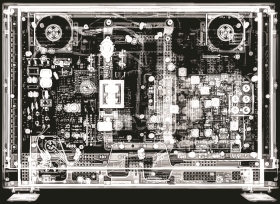

The X-ray scanning and baggage screening feature in this issue has examined what Roteck is developing locally as a mobile scanning solution. In this article we take a further look at what another company, XPro Security Solutions, has to offer in terms of X-ray scanning for airports and other locations with high security requirements. In addition, we asked Greg Dixon, a director of XPro, for some insights into X-ray scanning and its use in today’s volatile world.
Dixon says XPro recently attended the Astrophysics dealer meeting in Prague to see what the latest products are from the company (XPro represents Astrophysics’ X-ray scanning solutions in South Africa). On this occasion, Astrophysics announced the launch of a new pallet and large cargo screening machine, the Astrophysics MVCTC high-performance multi-view and CT screening system.
This machine combines the power of multi-view conventional X-ray screening and computer tomography to create a 3D image for the screening of medium- to high-density pallets and for inspecting challenging commodities.
Dixon adds that Astrophysics has done a significant amount of research into the benefits of using artificial intelligence (AI) software to enhance its systems. “AI is now considered a vital component of screening efficiencies, speed and accuracy in the quest to reliably identify threats on a consistent basis in the ever-increasing passenger and cargo market,” adds Dixon. “Astrophysics has released AI software as an optional extra on many of its smaller model machines. This software increases the identification speed of any threats or risks identified, without any human intervention.”
Regulatory issues
Of course, when it comes to using X-ray technology (from any company), one of the primary hindrances to these systems being installed is safety – and rightly so. Organisations in South Africa cannot simply install an X-ray scanner whenever the idea strikes.
Dixon says it has long been recognised that exposure to high levels of radiation (from X-rays) may cause tissue damage, and that chronic exposure to lower levels of radiation may result in cancer.
“Since X-rays are a source of ionising radiation, they are governed by the Hazardous Substances Act which is managed and regulated by the Department of Health,” he explains. “Every security X-ray machine must be licensed by the Department, specific to the machine manufacturer, model and location of installation.
“XPro Security Solutions, as part of its service to customers, undertakes the facilitation of the licence application, as well as ensuring that maximum radiation emissions allowed are checked on a regular basis.”
Moreover, he adds that safety levels as prescribed by law are monitored on a regular basis by Department of Health inspectors (at least on an annual basis). These inspections and the service provided by companies that install and maintain X-ray systems allow the continued and safe use of these systems for security and the global fight against terrorism.
People scanning advances
There is an enormous difference between scanning baggage with X-rays, which nobody objects to unless the contents of their baggage can be damaged, and scanning people, where there are perceived health risks as well as privacy issues.
X-ray body scanners are accurate and efficient in terms of identifying any threats on or in the human body, says Dixon, but the many disadvantages such as slow throughput, privacy invasion and perceived health risks through the emittance of ionising radiation have seen this method lose popularity, and it has even been outlawed in many countries.
“Newer technology such as millimetre radio-wave (MMRW) screeners has proven effective, but some critical shortfalls and challenges have been identified, and these are yet to be overcome. This screening method is also unable to identify any threats inside the human body (swallowed or inserted) and only penetrates approximately 2 mm into human skin. On the positive side, it does not use ionising radiation, but rather passive millimetre radio-wave frequencies, which are harmless to humans.”
Multi-zone, pinpoint-accuracy, walk-through metal detectors remain the primary screening method at most airports and high-security areas. Although these are capable of detecting ferrous and non-ferrous metals, inadequacies related to non-metal threats (such as liquid or plastic explosives) remain of concern.
There is therefore still much to be done in terms of enhancing and expanding the capabilities of body scanners, not to mention improving the safety aspect. However, to date there are limited alternatives that can function as well as X-rays, making these scanners the choice in most locations. In addition, more research has been completed which will assist in ensuring the safe use of these devices in airports and other locations.

© Technews Publishing (Pty) Ltd. | All Rights Reserved.